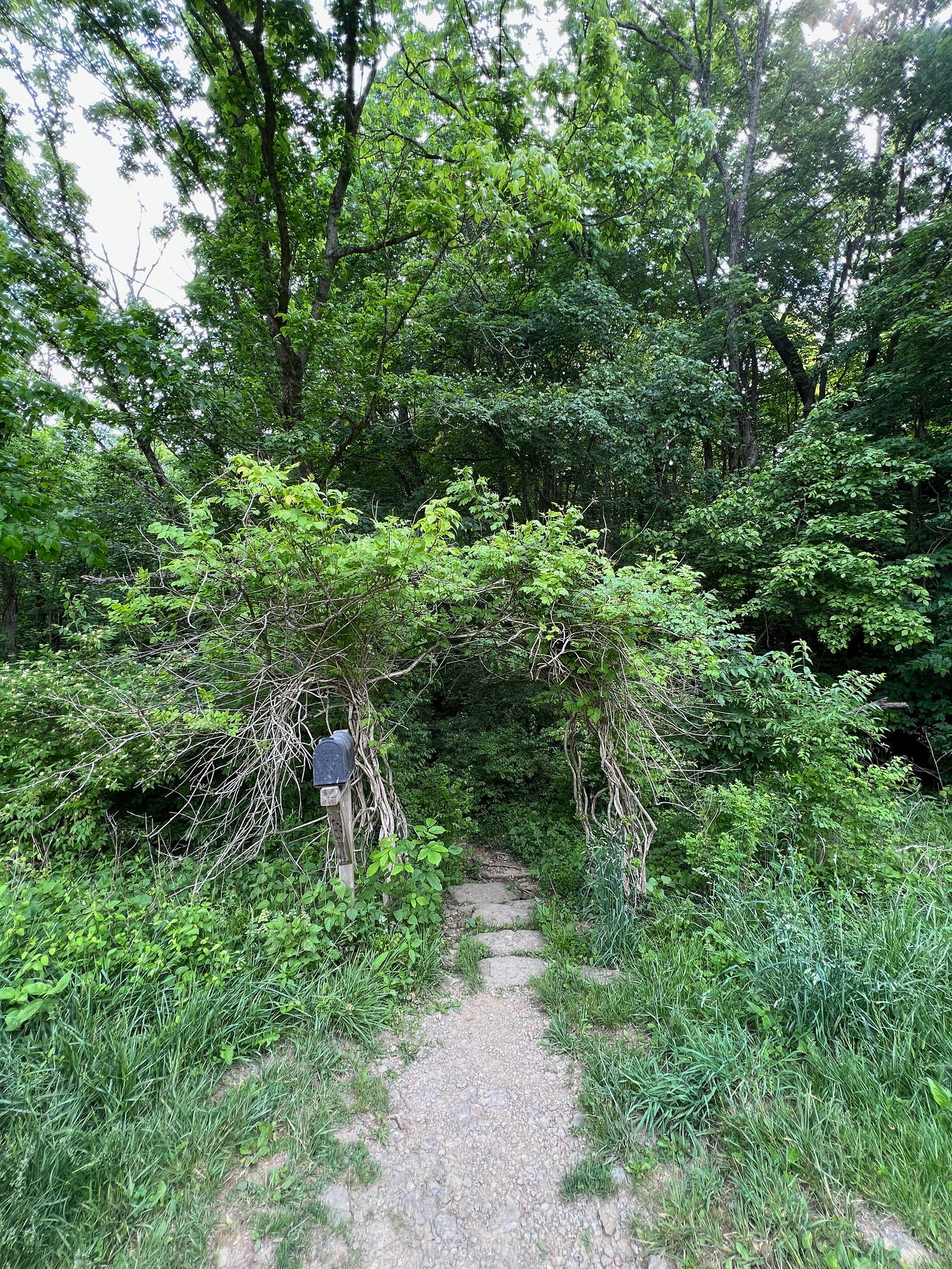
About this time last year, I climbed into my truck on a frosty morning and drove against commuter traffic to Highland Cemetery. It’s a huge place on top of one of the hills surrounding Cincinnati. The front part of the cemetery is filled with gravestones and a mausoleum. But the back part remains wild.
The cemetery welcomes visitors, and its undeveloped forest is crossed with walking trails and a large stream. I’d packed my Silky folding saw and a shoulder bag for my visit, because this was the day that my chairmaking was going to take a turn. Literally.
I ducked through the forest’s gate – twined by living branches – and trod down the hill to a stream bed paved with rock and lined with unkempt tree trunks. I was alone.
I stopped, took a deep breath and tried to focus my eyes on the roots and branches. Somewhere in these vines, roots and branches there had to be some chair arms.
OK, here’s some voiceover narration for the scene: If you’ve been following my work for the last five years, you know that I’ve dropped all pretense and ushered you into a mind that has been obsessed with vernacular stick chairs since 1998.
There’s not much written about these folk chairs, so I’ve encouraged others to write about them, and I have written some myself. Perhaps the biggest mind-opening aspect of learning about these chairs came from Chris Williams, a Welsh chairmaker, and Emyr Davies at St Fagans National History Museum of Wales.
Here it is: The arms of the best stick chairs come from bent branches. The branches are sawn through their middle and then joined to make a proper armbow. This armbow then dictates almost everything else about the design of the chair, from the shape of the seat, to the number and placement of sticks to the curve of the comb.
If this doesn’t sound cack-handed to you, then you’ve been reading my shit for too long.
In general, bent branches are not usually the guiding force when designing a normal chair. It should be the designer – shaping nature to suit them.
But the Welsh let the trees guide their hands.
So on that frosty morning last year I had set out to find bent branches in the vast wood behind the cemetery. I wasn’t optimistic about it. American trees tend to grow arrow-straight. I’ve walked both Welsh and American forests long enough to know this.
But I had a little hope thanks to John Porritt, a British chairmaker who had emigrated to Upstate New York. He had found enough bent branches to make some beautiful chairs. When I worked with John on his book, “The Belligerent Finisher,” he gave me a few sentences of advice about finding bent branches in North America.
The advice was this: Look at the stream beds for tree roots that have curved down to the stream. Those roots can become armbows.
So I walked the stream at Highland Cemetery for at least a mile. I took slow steps, watching the dirt bank on either side of the stream.
I didn’t see squat.
I walked back toward my truck, hoping that I had missed a bank of curved roots. I hadn’t.
I got back into my truck and headed back to my Covington workshop.
For the next 11 months I kept looking for bent branches at Highland Cemetery, Spring Grove Cemetery and at Linden Grove, the cemetery just south of our shop. The trees in these places were allowed to grow wild. I thought it was only a matter of time before I saw what I couldn’t see before.
After so many months of looking, I became a bit frustrated and hopeless.
Then last month, my mother-in-law, Jane, died. She didn’t want a funeral. She instead asked for a party for all her family members. So we gave her one.
At the party, I got into a conversation with one of the 1,444 cousins to my wife, Lucy. It was Bernie, an architect who lived on a Kentucky farm less than an hour from us. Bernie and I had always gotten along because we liked to build things and were nerds about wood and other natural materials.
“Do you like Osage Orange?” Bernie asked me.
“Hell no,” I replied. Years ago, I had built some cabinets out of Osage Orange for a Habitat for Humanity project. The wood was fierce and hateful.
Bernie accepted my assessment. And after some more gabbing, Bernie talked about some of the weird Osage Orange branches he was going to have to clear from his land. Branches that were bent, curved and gnarly.
“Wait,” I said, almost panicked. I pulled out my phone. “Bent like this?”
“Yes,” he said.
Keep reading with a 7-day free trial
Subscribe to The American Peasant to keep reading this post and get 7 days of free access to the full post archives.

